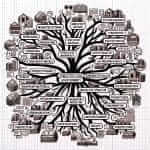The IELTS Reading section can seem daunting, especially Section 1. However, with the right strategies and understanding, you can confidently navigate this section and boost your overall score. This guide provides a comprehensive breakdown of IELTS Reading Section 1, offering valuable insights, practical tips, and real exam examples to help you succeed.
Understanding IELTS Reading Section 1
What to Expect
Section 1 typically presents 3 short passages, each with around 100-150 words. These passages are usually factual and descriptive, often resembling information found in brochures, advertisements, or notices.
Question Types
You’ll encounter various question types designed to assess your ability to locate specific information and understand the basic meaning of the text. Common question types include:
- Multiple Choice: Selecting the correct answer from a list of options.
- Sentence Completion: Filling in gaps in sentences using words from the text.
- Short Answer Questions: Providing brief answers based on information from the text.
- True/False/Not Given: Determining if statements are true, false, or not mentioned in the text.
- Matching: Connecting information from the text to corresponding categories or statements.
Examples and Strategies: Tackling Different Question Types
Let’s explore common question types with examples and effective strategies to approach them:
1. Multiple Choice:
Example: (Passage extract from IELTS Cambridge 14, Test 1, Passage 1)
The original London Media Centre closed in December 2000, and the search for a new site for an improved Centre began soon after.
Question: When did the search for a new Media Centre location begin?
A. Before December 2000
B. Immediately after the original centre closed
C. After finding a suitable location
Strategy:
- Identify keywords in the question: “search,” “new Media Centre,” “begin.”
- Scan the passage for synonyms or paraphrases: “search” – “began soon after.”
- The passage states the search began “soon after” the original centre closed, indicating the answer is B.
2. Sentence Completion:
Example: (Passage extract from IELTS Cambridge 12, Test 8, Passage 1)
The activity, designed for children aged from six to eleven, aims to improve their understanding of where food comes from.
Question: The activity is intended to teach children aged 6-11 about the _____ of their food.
Strategy:
- Identify the keywords: “activity,” “children aged 6-11,” “understanding,” “food.”
- Locate the relevant information: “improve their understanding of where food comes from.”
- The missing word should convey the idea of “where food comes from.” The answer is origin.
3. True/False/Not Given:
Example: (Passage extract from IELTS Cambridge 11, Test 4, Passage 1)
The park is one of the most important areas for wildlife in the region, with over 60 species of birds regularly spotted.
Question: More than 60 bird species are unique to this park.
Strategy:
- Identify keywords: “60 species,” “birds,” “unique,” “park.”
- The passage mentions “over 60 species,” but doesn’t state they are unique to the park.
- The answer is Not Given.
 IELTS Reading Section Tips
IELTS Reading Section Tips
Common Mistakes and How to Avoid Them
- Rushing through the passage: Take your time to understand the text before answering.
- Overthinking or over-analyzing: Stick to the information presented in the passage.
- Not managing time effectively: Allocate time wisely for each passage and question.
Tips for Success: Maximizing Your Score
- Improve your skimming and scanning skills: Quickly locate relevant information within the text.
- Expand your vocabulary: Familiarize yourself with common synonyms and paraphrases.
- Practice regularly with past papers: Get accustomed to the format and question types.
- Pay attention to grammar and spelling: Errors can affect your score.
Conclusion
By understanding the structure of IELTS Reading Section 1, mastering question types, and practicing consistently, you can confidently approach this section and achieve your desired score. Remember to stay calm, manage your time effectively, and apply the strategies discussed to unlock your full potential.


